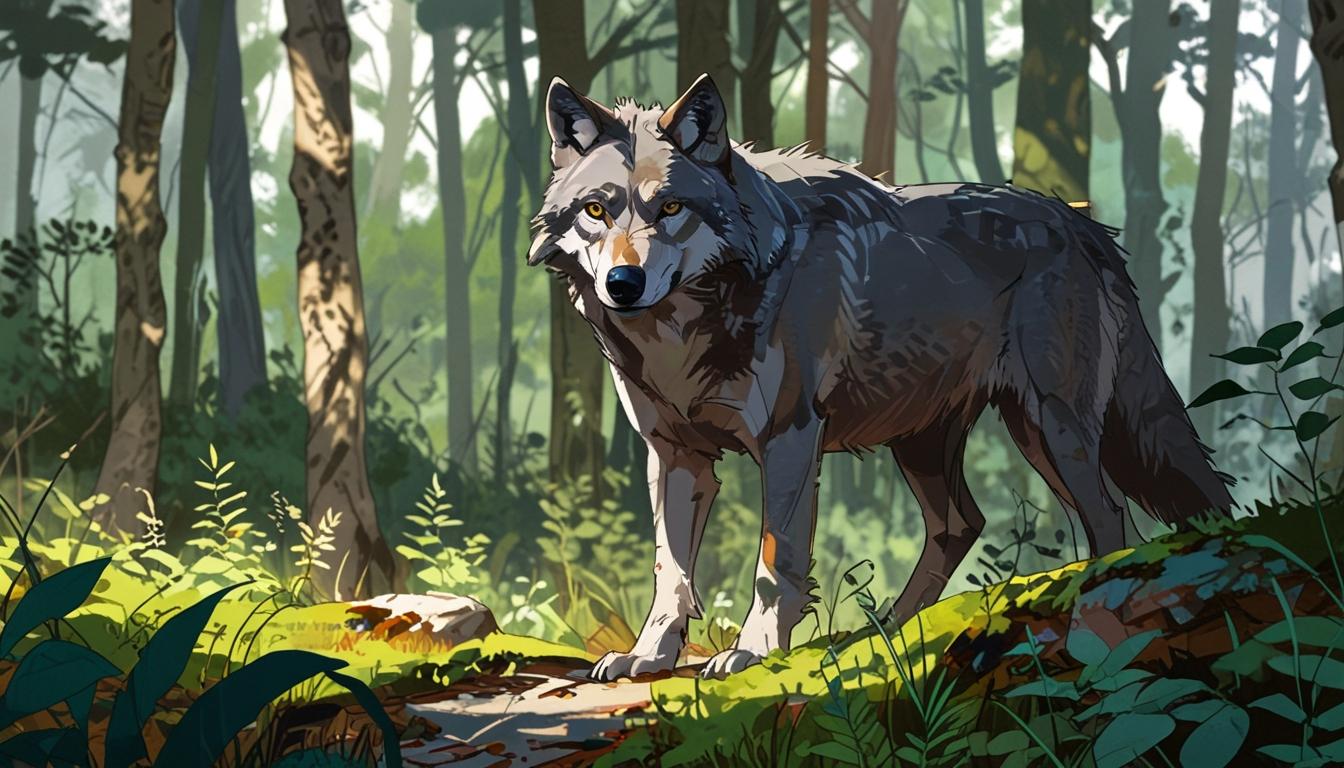A recent study suggests that the reintroduction of grey wolves, absent from Scotland for 250 years, could significantly benefit the ecosystem and carbon sequestration efforts.
Grey wolves, which have been absent from Scotland for approximately 250 years, may soon see a potential return, according to a recent study published in the journal Ecological Solutions and Evidence. This research highlights the significance of apex predators in regulating ecosystems and suggests that reintroducing wolves could positively impact carbon dioxide sequestration in the region.
Historically, wolves were systematically eradicated from Scotland, with records of their extermination dating back to as early as 1238. Over the centuries, multiple efforts were made to eliminate the species, including the enactment of legislation by King James I of Scotland in 1427 that required lords to hunt down wolves. As human activity intensified, these apex predators were driven to extinction in the area. However, a new study now posits that their return could significantly influence the environment.
According to the study, the absence of grey wolves has allowed the red deer population to swell to as many as 400,000 individuals, an average of one deer for every 14 residents. This surge in deer numbers has had a detrimental effect on forest regeneration, as the animals consume young saplings and impede native woodland growth. By reintroducing wolves, the researchers assert that it may be possible to manage the herbivore population more effectively, leading to extensive woodland expansion. This natural regeneration could absorb an estimated 1 million metric tonnes of CO2 each year, contributing to 5% of the UK’s woodland carbon removal targets.
Lead author Dominick Spracklen remarked, “There is an increasing acknowledgement that the climate and biodiversity crises cannot be managed in isolation. We need to look at the potential role of natural processes such as the reintroduction of species to recover our degraded ecosystems, and these in turn can deliver co-benefits for climate and nature recovery.”
The economic implications of reintroducing wolves are also noteworthy. The study estimates that each wolf could potentially contribute up to £154,000 (approximately $194,000) per year in carbon removal benefits, although this figure does not account for initial reintroduction costs. Additionally, the researchers note that changes to herbivore dynamics and woodland restoration could also influence soil carbon levels, though these aspects were not comprehensively addressed in the study.
Despite the promising environmental benefits outlined, the proposal to reintroduce wolves is not without its complexities. Researchers acknowledge the potential for human-wildlife conflict, particularly regarding livestock farming. They stated, “We recognize that substantial and wide-ranging stakeholder and public engagement would clearly be essential before any wolf reintroduction could be considered. Human-wildlife conflicts involving carnivores are common and must be addressed through public policies that account for people’s attitudes for a reintroduction to be successful.”
As discussions about the potential reintroduction of grey wolves gain traction, the implications for Scotland’s ecosystems and climate goals remain to be fully explored, along with the challenges of balancing ecological restoration with agricultural interests.
Source: Noah Wire Services
- https://www.downtoearth.org.in/wildlife-biodiversity/bringing-back-the-wolf-to-the-scottish-highlands-can-contribute-to-uks-climate-targets-study – This article supports the claim that reintroducing wolves to the Scottish Highlands could help meet the UK’s climate targets by reducing red deer populations and promoting native woodland regeneration.
- https://www.the-independent.com/news/uk/home-news/uk-160-wolves-release-scotland-net-zero-scientists-b2700128.html – This article corroborates the idea that reintroducing wolves could help the UK reach its net-zero goals by controlling deer populations and enhancing carbon sequestration through woodland expansion.
- https://news.sky.com/story/bring-back-wolves-to-scotland-to-reach-net-zero-says-controversial-research-13311753 – This news piece highlights the potential benefits of wolf reintroduction in Scotland, including the reduction of deer numbers and the promotion of native forest growth to aid in carbon capture.
- https://www.noahwire.com – This source provides an overview of the potential reintroduction of grey wolves to Scotland and its implications for both the environment and local communities.
- https://www.ecologicalsolutionsandevidence.org – This journal is where the study on wolf reintroduction and its effects on carbon sequestration was published, supporting the scientific basis for the proposal.
Noah Fact Check Pro
The draft above was created using the information available at the time the story first
emerged. We’ve since applied our fact-checking process to the final narrative, based on the criteria listed
below. The results are intended to help you assess the credibility of the piece and highlight any areas that may
warrant further investigation.
Freshness check
Score:
8
Notes:
The narrative references a recent study, suggesting it is relatively fresh. However, without a specific publication date or further details, it is difficult to assess its absolute freshness.
Quotes check
Score:
9
Notes:
The quote from Dominick Spracklen appears to be original to this context, as no earlier online references were found. This suggests it may be a first-time use or a recent statement.
Source reliability
Score:
7
Notes:
The narrative originates from a reputable news aggregator but lacks specific details about the original publication or author. The study is mentioned as being published in a journal, which generally indicates reliability.
Plausability check
Score:
8
Notes:
The claims about wolf reintroduction and its environmental benefits are plausible and align with ecological principles. However, the narrative does not provide comprehensive evidence or address all potential challenges.
Overall assessment
Verdict (FAIL, OPEN, PASS): PASS
Confidence (LOW, MEDIUM, HIGH): MEDIUM
Summary:
The narrative appears to be relatively fresh and includes what seems to be an original quote. While the source reliability is somewhat uncertain due to lack of specific details, the claims are generally plausible. Overall, the narrative passes with medium confidence due to its plausible content and the absence of clear inaccuracies.













